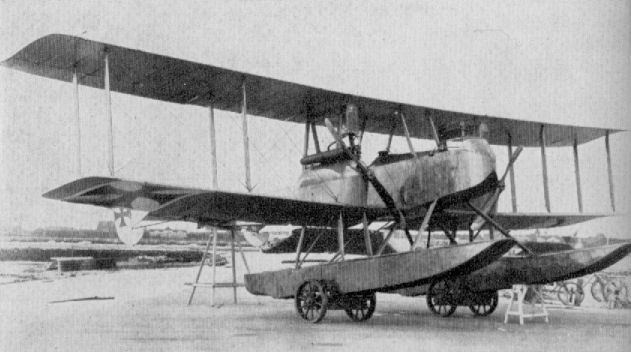Wingspan 16 m | Manufacturer Gothaer Waggonfabrik | |
 | ||
The Gotha WD.7 (for Wasser Doppeldecker - "Water Biplane") was a reconnaissance floatplane developed in the German Empire during World War I.
Contents
Development
After the pusher WD.3 was not accepted by the Imperial German Navy, Gotha turned to a new layout that would keep the aircraft's nose free for forward-firing weapons. The WD.7 therefore, was a conventional biplane with twin engines mounted tractor-fashion on the leading edge of the lower wing. Eight examples were built for use as trainers for torpedo bombing. During 1917, two of these aircraft were used for testing a 37 mm (1.46 in) autocannon built by DWM.
The same airframe was used to create the WD.8 reconnaissance floatplane, substituting the twin wing-mounted engines with a single Maybach Mb.IVa in the nose.
Variants
Specifications (WD.7)
General characteristics
